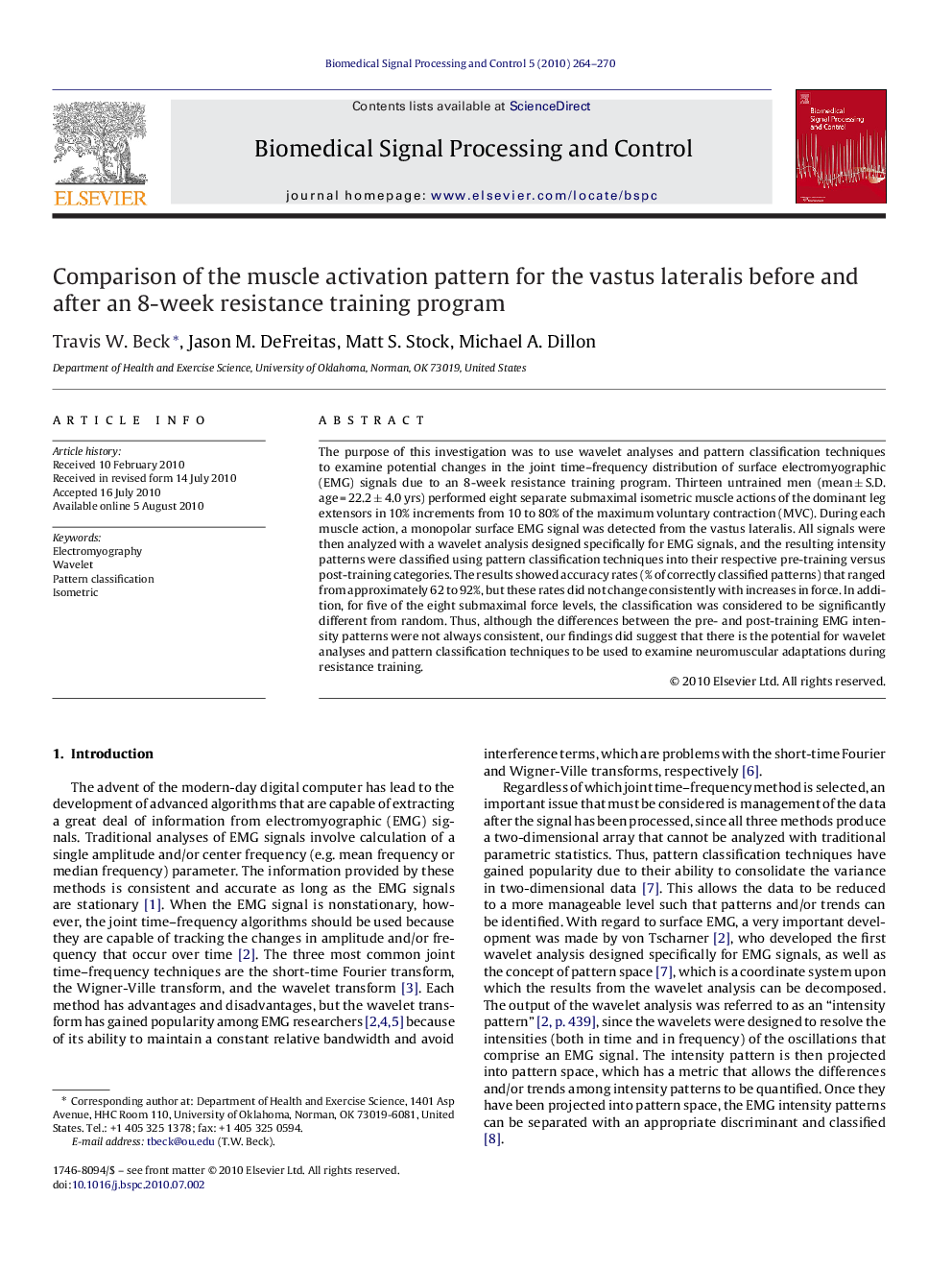| Article ID | Journal | Published Year | Pages | File Type |
|---|---|---|---|---|
| 558228 | Biomedical Signal Processing and Control | 2010 | 7 Pages |
The purpose of this investigation was to use wavelet analyses and pattern classification techniques to examine potential changes in the joint time–frequency distribution of surface electromyographic (EMG) signals due to an 8-week resistance training program. Thirteen untrained men (mean ± S.D. age = 22.2 ± 4.0 yrs) performed eight separate submaximal isometric muscle actions of the dominant leg extensors in 10% increments from 10 to 80% of the maximum voluntary contraction (MVC). During each muscle action, a monopolar surface EMG signal was detected from the vastus lateralis. All signals were then analyzed with a wavelet analysis designed specifically for EMG signals, and the resulting intensity patterns were classified using pattern classification techniques into their respective pre-training versus post-training categories. The results showed accuracy rates (% of correctly classified patterns) that ranged from approximately 62 to 92%, but these rates did not change consistently with increases in force. In addition, for five of the eight submaximal force levels, the classification was considered to be significantly different from random. Thus, although the differences between the pre- and post-training EMG intensity patterns were not always consistent, our findings did suggest that there is the potential for wavelet analyses and pattern classification techniques to be used to examine neuromuscular adaptations during resistance training.
